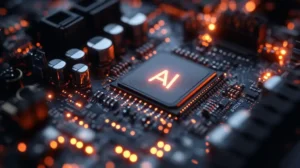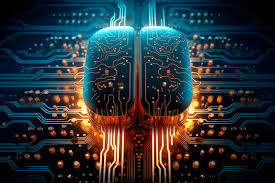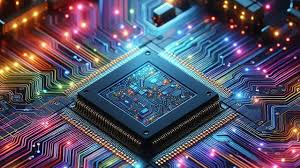
“Rising Demand for AI Chips Spurs Technological Progress and Energy Uptake 2025”
GREEN ENERGY

AI chips, also known as artificial intelligence processors or accelerators, are specialized hardware designed specifically to execute AI tasks more efficiently than general-purpose processors.
Unlike traditional CPUs, which are built for general computing, AI chips are optimized for the massive parallel processing required by machine learning and deep learning models. These chips can handle huge volumes of data and execute complex algorithms at lightning speed.
In recent years, artificial intelligence (AI) has leapt from the realm of research labs and science fiction into our everyday lives. From voice assistants and recommendation algorithms to autonomous vehicles and medical diagnostics, AI is now deeply embedded in the infrastructure of modern life. Behind this rapid transformation lies an unsung hero: the AI chip.
As the demand for AI capabilities skyrockets, so too does the need for powerful, specialized hardware to support these technologies. AI chips—such as GPUs (graphics processing units), TPUs (tensor processing units), and other custom accelerators—have become essential components in everything from data centers to smartphones. This boom in chip usage is not just accelerating the pace of technological innovation; it’s also driving significant increases in energy consumption.
The AI Chip Explosion: A Backbone of Innovation

AI chips are purpose-built to handle the heavy computational load required by machine learning algorithms. Traditional CPUs struggle with the parallel processing needed for training large AI models, whereas GPUs and TPUs can manage thousands of simultaneous operations. This makes them perfect for the high-performance computing demands of today’s AI systems.
Thanks to these chips, we’ve witnessed enormous advances in generative AI (think ChatGPT and image generation tools like DALL·E), natural language processing, computer vision, and robotics. Industries ranging from healthcare and finance to logistics and entertainment are now deploying AI solutions at scale—all enabled by the raw power of AI chips.
As more organizations adopt AI, the demand for these chips continues to soar. Tech giants like NVIDIA, AMD, and Intel are racing to produce faster, more efficient versions to meet the needs of this growing ecosystem.
The Energy Equation: Powering the Future

With great computing power comes great electricity consumption. As data centers expand and become more AI-centric, their energy requirements increase accordingly. Training just one large language model can consume as much electricity as 100 U.S. homes use in a year. Multiply that by the hundreds of models being trained and run daily around the world, and it’s clear that energy usage is becoming a major consideration.
This rise in energy demand has sparked a broader conversation around sustainability. Companies are investing in renewable energy sources and exploring ways to make AI training more energy-efficient. Innovations in chip design—such as lower voltage operation, advanced cooling systems, and smarter task allocation—are helping to offset some of this power draw.
Despite the challenges, many industry leaders view this not as a roadblock but as a call to innovate. The push to create greener chips and more efficient data centers is already yielding results and may, in turn, lead to more sustainable tech across the board.
A Double-Edged Surge: Opportunity and Responsibility

The rapid growth of AI chip demand represents a double-edged sword. On one hand, it unlocks enormous potential: smarter cities, faster drug discovery, personalized education, and much more. On the other hand, it introduces new challenges—particularly around power consumption, environmental impact, and equitable access to cutting-edge technologies.
Governments, enterprises, and researchers must work together to balance innovation with sustainability. Investment in energy-efficient computing infrastructure, green energy grids, and responsible AI practices will be crucial to ensure that this tech-driven future remains viable for generations to come.
Looking Ahead

As AI continues its meteoric rise, so too will the importance of AI chips. These small, powerful processors are shaping the way we live, work, and interact with the world. Their growing demand is fueling a wave of technological progress—redefining industries and unlocking possibilities we could only dream of a decade ago.
Yet, with this progress comes responsibility. The energy footprint of AI is a pressing issue and one that must be addressed with innovation, collaboration, and care. If we get it right, the future of AI can be not only smart but also sustainable.






